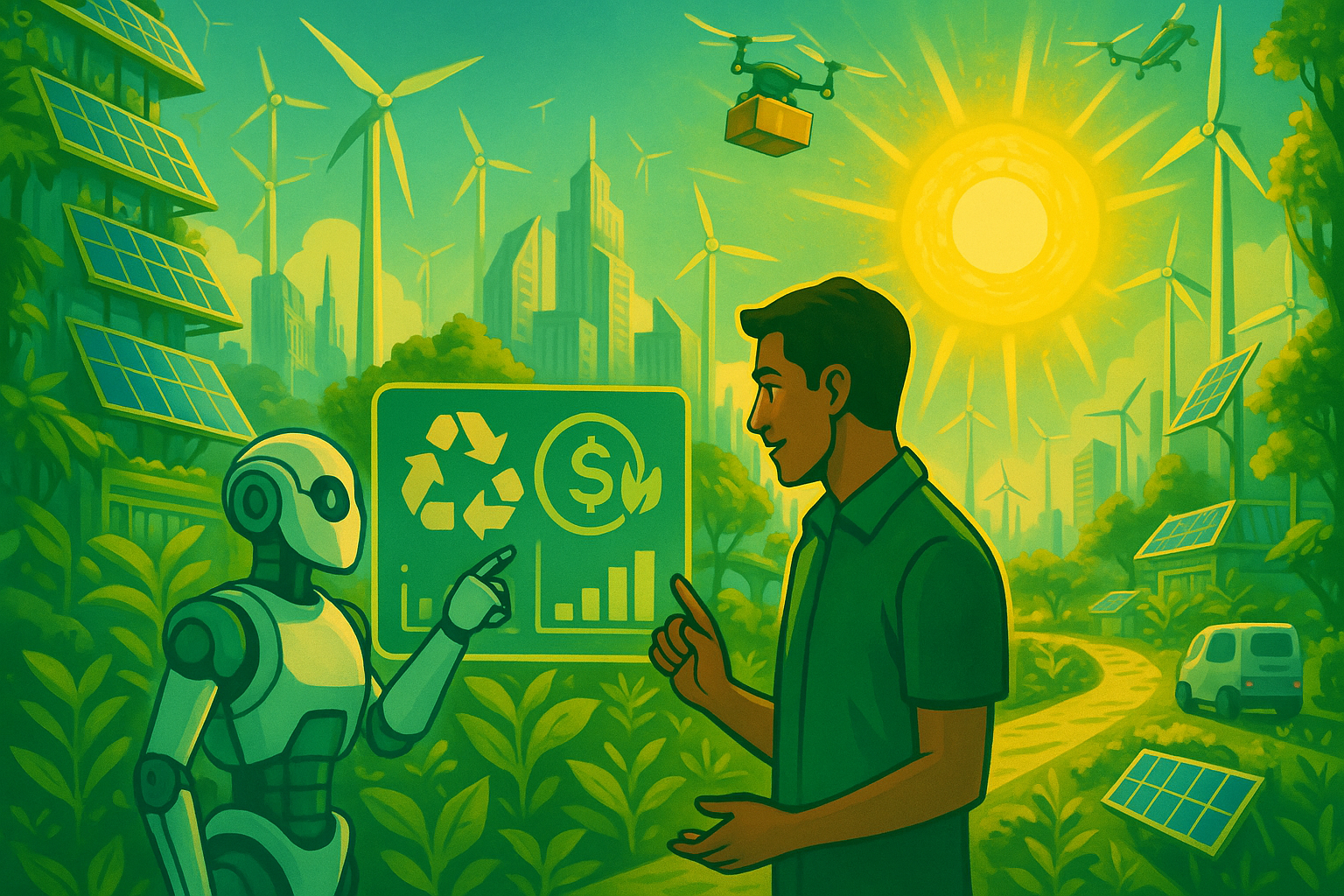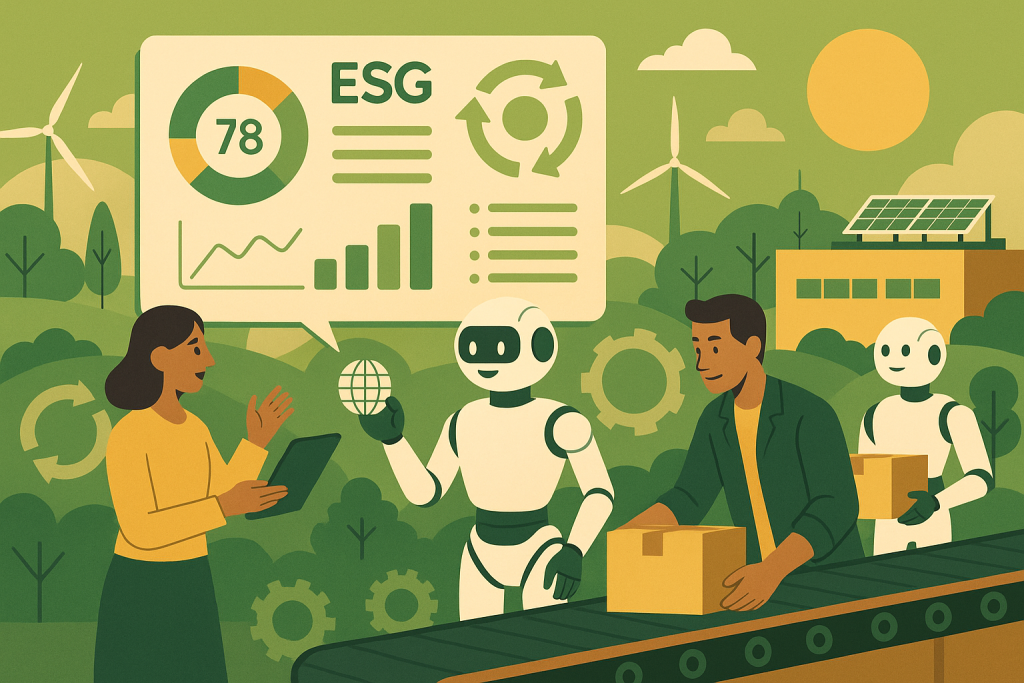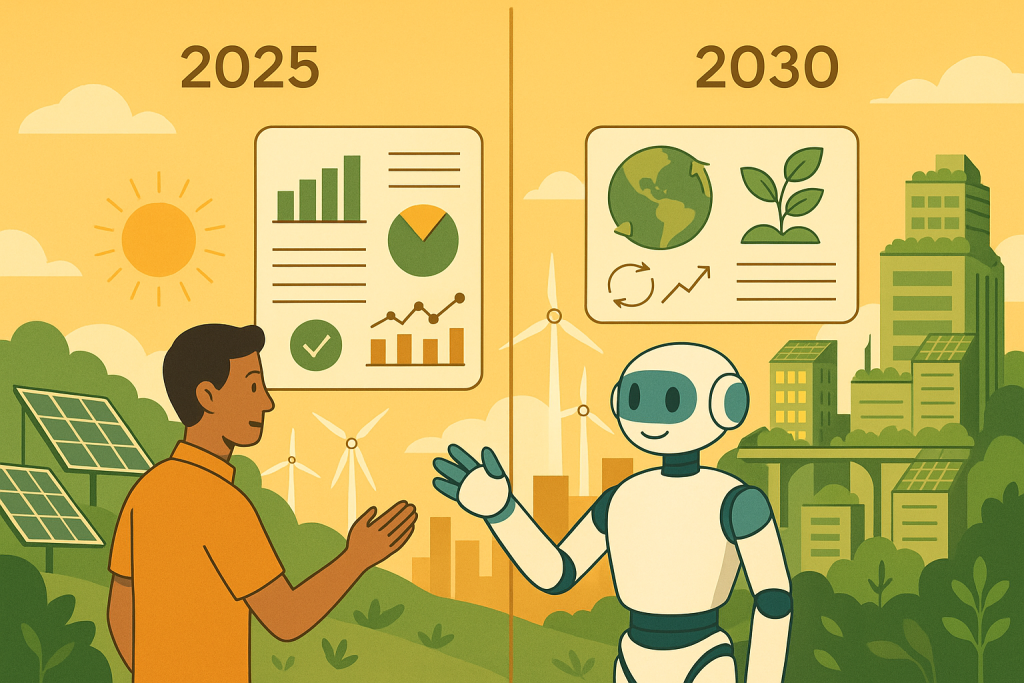From Linear to Circular — With Intelligence
The traditional “take-make-dispose” economy is on its last legs. As resource scarcity, climate regulation, and consumer demand push industries to rethink value chains, the circular economy offers a regenerative alternative. But transitioning from linear to circular isn’t easy—it requires data, visibility, and system-wide orchestration.
Enter AI.
Why AI Supercharges the Circular Economy
Artificial Intelligence can transform circular ambitions into tangible strategies by:
- Identifying hidden waste streams in production, packaging, logistics, and energy.
- Recommending reuse strategies through predictive modeling (e.g., refurbishing, resale, parts recovery).
- Creating new revenue streams from byproducts or previously discarded materials.
Real-World Examples
- Manufacturing: AI systems scan IoT and supply chain data to detect overproduction, off-spec outputs, or material waste. Insights lead to smarter remanufacturing or secondary market sales.
- Fashion: AI helps brands identify unsold inventory patterns, enabling resale platforms, upcycling partnerships, and zero-waste design strategies.
- Food & Beverage: Predictive models optimize shelf-life management, redistributing surplus to avoid spoilage while creating donation and resale channels.
AI in Action: The Circular Opportunity Loop
- Detect: AI processes sensor, transaction, and lifecycle data to uncover inefficiencies and waste.
- Decide: Algorithms recommend interventions—reuse, recycle, remanufacture, or resell.
- Design: Generative AI proposes more circular product and packaging formats.
- Distribute: Marketplace intelligence optimizes resale and recovery logistics.
- Document: ESG AI tools (like CORAL) auto-generate compliance and impact reports.
Outcome: Circularity That Pays Off
Smart circular strategies don’t just reduce environmental footprint—they unlock trapped economic value. With AI, companies gain:
- Lower material and disposal costs
- Extended product lifecycles
- Stronger ESG performance and investor appeal
- Resilience against supply shocks
🚀 The Role of Vertical AGIs
Next-gen AI—like Sustainability AGIs—go beyond analytics. They continuously learn from environmental data, adapt to evolving regulations (e.g., CSRD, EPR), and automate end-to-end ESG and circular workflows. Think of them as the COO for your circular value chain.



